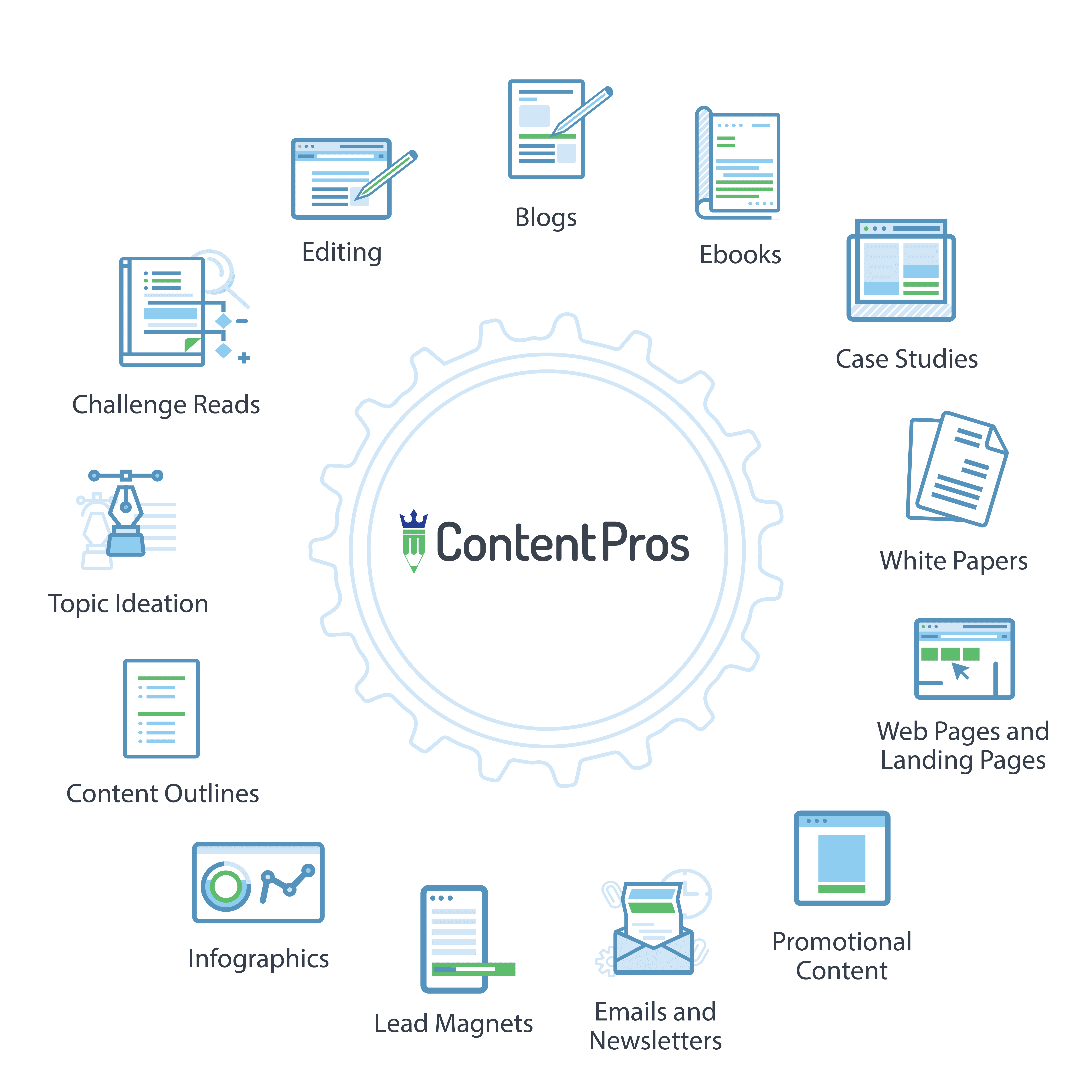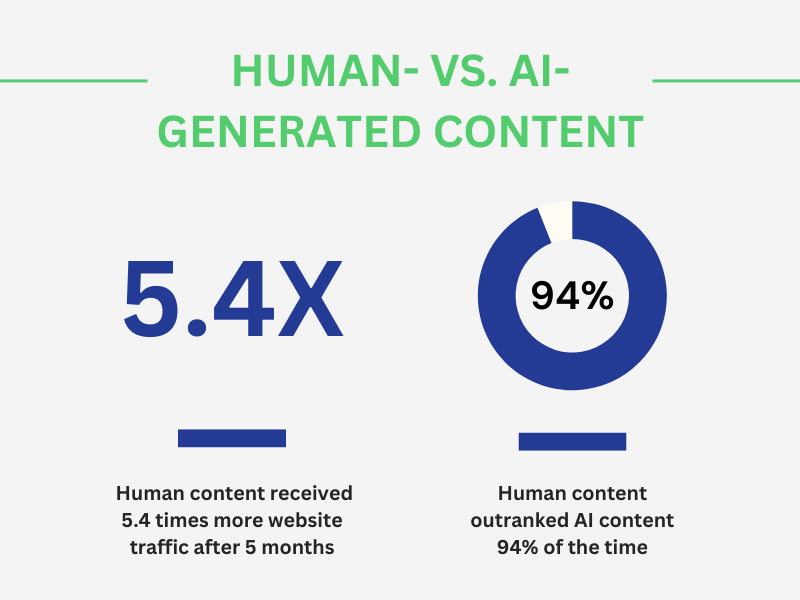You’re investing time, money, and talent into content marketing, but are you getting the return you should be? Too often, companies churn out blogs, web pages, and social posts without a clear path to profit. You end up with content that looks good on paper but doesn’t drive real results. Let’s change that.
Here are seven strategies you can use to align your content with specific goals, sharpen your execution, and measure what matters. As a result, you’ll get content that does more than exist; it performs.
1. Focus on Bottom of Funnel Content and Conversions
Your funnel is where sales and marketing naturally align. Your content shouldn’t just get prospects into the funnel, but also move them all the way through it.
To do this, focus on content that helps your leads make buying decisions. Examples include:
- Nurture sequences
- Remarketing content
- Evidence-based content
- Testimonials and case studies
- Thought leadership articles
- Product-focused or service-focused pieces
- Content targeting leads that have gone cold
Your content can do so much more than share information. With the right focus and language, you can use your content to drive new sales and upsells, build loyalty, and spark referrals — all of which have a tangible ROI.
2. Create Case Studies
Marketing case studies bring your products or services to life and build trust with leads. These detailed accounts show how others are using what you offer and the results they’ve achieved. Your readers can step into your customers’ shoes and imagine getting those same results (or better), which can help those “on the fence” feel confident about moving forward.
At least 71% of consumers consistently read reviews before making a purchase, suggesting most people trust their peers for referrals and purchasing decisions. Case studies are an effective way to build trust and social proof, especially for B2B businesses, to guide leads over the finish line.
Beyond conversion rate optimization, case studies are inherently unique (satisfying one of Google’s ranking factors), so they have SEO value, too. They’re also easy to repurpose into multiple formats, such as short- and long-form videos, blog posts, and social media posts, enhancing the productivity of your creative team.
3. Repurpose Content into Other Formats
Don’t get stuck in the mindset of having to create new content every day. It’s exhausting, expensive, and time-consuming, and quality often suffers as a result.
A better approach is to repurpose your existing content for other formats and channels. You’ve already done most of the work, so it makes sense to give your content a few slight tweaks to save time while maximizing its impact.
For example, not everyone reads blogs, and not everyone watches videos. But when you turn a blog into a video (or vice versa), you stand to reach multiple audiences with essentially the same message.

4. Spruce Up Dated Content
Some content has a longer shelf life than others. You don’t want to share old facts or promote content with broken links, especially when your competitors are publishing better versions. Instead, you should routinely evaluate your content to ensure relevancy and avoid creating more of the same.
Updating old content works: For example, Search Engine Journal increased organic traffic and page views by more than 60% just by removing and updating old content.
Content updates may include, but are not limited to:
- Writing fresh introductions
- Updating stats and sources
- Adding internal links to recent content
- Optimizing for new keywords
- Reviewing tone to ensure it resonates with your audience
- Refreshing images
- Writing a new meta description
- Refining your call to action
Google pays attention to freshness factors. The algorithm wants to make sure it’s delivering the most recent and relevant information to searchers. Changing the date on your content isn’t enough, though: Google can see through a feeble attempt to manipulate the rankings. Whatever changes you make, do so with the intention of truly improving what’s already there for your audience.
5. Use Generative AI Strategically
Human-generated content outperforms AI-generated content by driving more traffic and resonating with the audience to spark your intended action. However, while you’re doing most of the work, AI can take your efforts to the next level.
Use AI as a tool to boost human expertise, such as brainstorming topic ideas, creating outlines, or turning audio into transcripts. This frees up your time so you can focus on strategy and quality, and leave the busy work to technology.
You can also run your drafts through AI tools (such as Surfer SEO) to find SEO opportunities or create social media and email newsletter headlines. This allows you to be more comprehensive with your content marketing without putting in much extra effort.
AI helps you work smarter, not harder. Just make sure you’re leaving the heavy writing to your human team.

6. Optimize Content for the Next Era of Search
In 2025 and beyond, marketers aren’t just optimizing their content for traditional search engines. ChatGPT has launched its own search experience, giving brands and companies more ways to be discovered.
If you’re not optimizing for ChatGPT, there’s no better time to start. ChatGPT uses different signals than Google to rank content, plus it aims to recommend websites and content that most closely align with user intent. Long-tail key phrases, direct answers to questions, and topical authority will give you the greatest advantage.
7. Distribute Your Content Effectively
Your content should do more than sit on your website waiting for clicks. Jumpstart its success by promoting it to your audience effectively. The more engagement you get shortly after publishing, the better it looks to search algorithms.
Some ways you can promote your content include:
- Sharing it on your social media channels and email list
- Reaching out to contributors and sources to request backlinks
- Working with micro-influencers for cross-posting
- Encouraging your employees to amplify your message
If you’re looking for maximum ROI, consider leveraging micro-influencers. More than half of brands say they plan to increase budget spend on influencers in 2025. That’s because they know it works. Micro-influencers have niche, engaged audiences who trust the content the influencer shares. You can get a wider reach in an authentic way.
Last but not least, incorporate your content marketing materials into your sales process. Share your content with your customer-facing sales team so they can use those resources to drive conversions. Free, valuable content for leads can help qualify and guide them through your sales funnel.
Get Help Maximizing Your Content Marketing ROI
Whether you’re creating new content or improving your existing assets, leaning on expert content marketers can help all of your content work harder, go further, and gain a greater ROI. Let Content Pros level up your strategy for 2025 and beyond — reach out today.

